How AI Detects Soil Nutrient Deficiencies
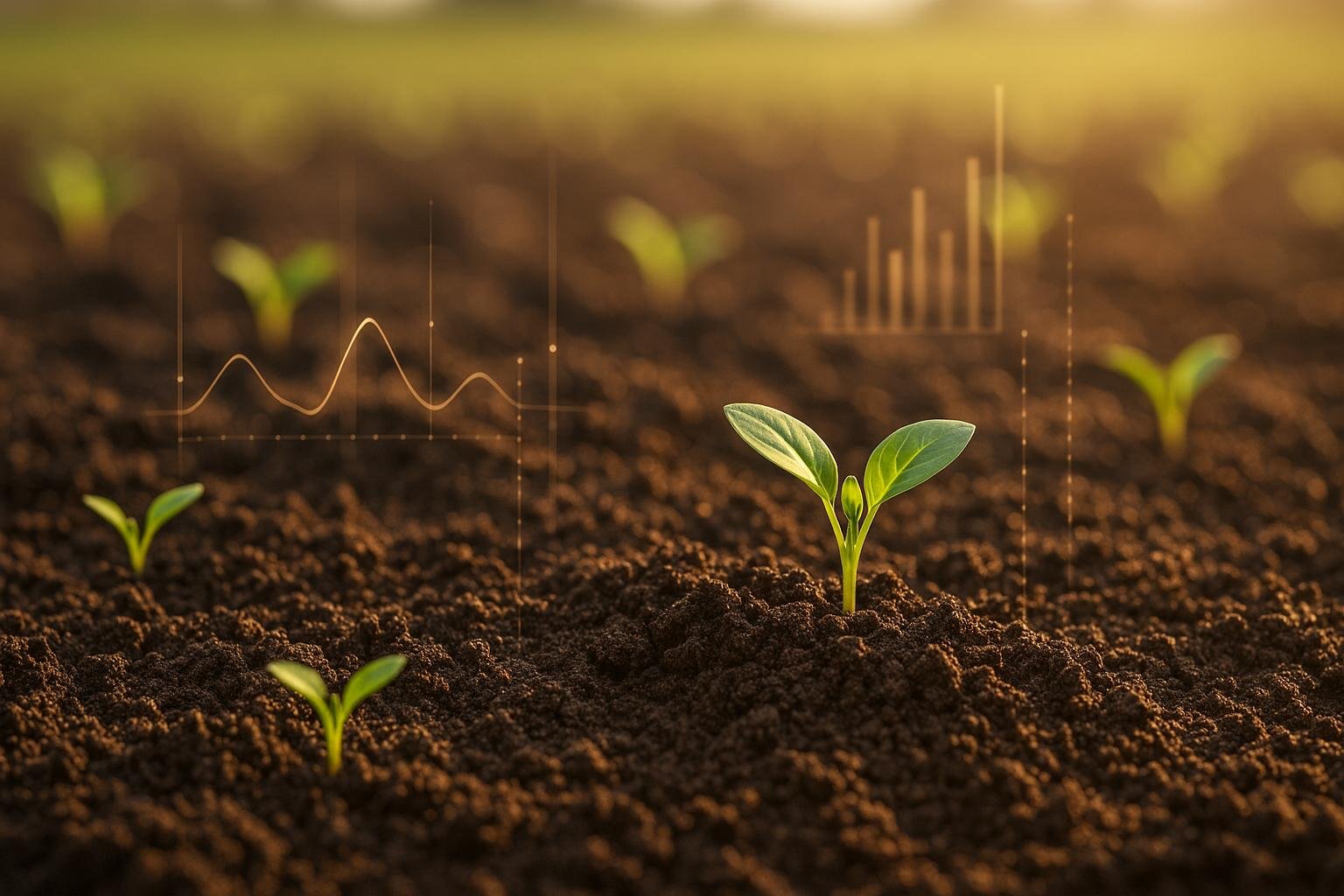
AI is transforming how we analyze soil by providing fast, accurate insights into nutrient levels. Instead of waiting weeks for lab results, AI tools can detect deficiencies in minutes using photos, sensor data, and environmental factors. Here's what you need to know:
- AI detects nutrient issues like nitrogen, phosphorus, and potassium deficiencies by analyzing plant visuals (color, texture, growth) and soil characteristics (color, compaction).
- Environmental data like temperature, rainfall, and humidity improve detection accuracy.
- AI offers cost-effective, real-time monitoring compared to traditional lab tests, which are slower and more expensive.
- Smartphone apps make these tools accessible for farmers and gardeners, helping optimize fertilizer use and reduce waste.
- While AI excels at early detection and ongoing tracking, lab tests remain useful for precise nutrient measurements.
AI tools like AIGardenPlanner even go a step further by combining soil analysis with local climate data to recommend plants suited to your soil and region. This approach helps gardeners improve plant health and yields while minimizing effort and cost.
Soil Quality Analysis Made Simple: AI-Powered App Demo for Smarter Farming!

How AI Finds Soil Nutrient Problems
AI combines visual analysis with data interpretation to quickly identify soil nutrient deficiencies - a process that used to take weeks. Below, we explore the key indicators and data inputs that enable this rapid detection.
Signs AI Looks for in Deficient Soil
AI starts by analyzing visual patterns on plants. Machine learning algorithms examine changes in leaf color, which can hint at specific nutrient issues.
Leaf texture and growth patterns provide additional insights. For instance, AI evaluates leaf size, shape, and spacing to detect stunted growth, often linked to potassium deficiency. It also identifies interveinal chlorosis - a condition where leaf veins stay green while the surrounding tissue yellows - commonly associated with iron or magnesium deficiencies.
Soil characteristics, such as color and texture, also play a critical role. By analyzing soil photos, AI can detect signs of compaction, drainage issues, or uneven organic content. Dark, rich soil typically indicates healthy organic matter, while lighter areas may signal nutrient depletion or poor drainage.
Environmental data integration adds another layer of accuracy. Factors like temperature, rainfall, and humidity impact how nutrients move through the soil. For example, colder soil can limit phosphorus availability to plants, even if soil tests show sufficient levels.
Why Data Quality Matters for AI Analysis
The accuracy of AI analysis depends heavily on the quality of the data it receives. Clear, well-lit images taken from a consistent angle and distance are essential for reliable results.
Comprehensive environmental data further improves diagnostic accuracy. AI systems perform best when they have access to detailed information about temperature, moisture, and other conditions that affect soil and plant health.
Timing is also crucial. Early morning images might show temporary wilting unrelated to nutrient problems, while late-afternoon photos could reflect heat stress. Mid-day captures, when plants are most stable, tend to provide the clearest picture of their condition.
These high-quality inputs allow AI to consistently deliver faster and often more actionable insights compared to traditional soil testing.
AI Detection vs Standard Soil Testing
AI stands out for its speed. Traditional soil tests require sending samples to a lab and waiting for results, while AI analysis is nearly instant once data is uploaded.
Cost is another advantage. Laboratory tests are typically more expensive, making AI a more budget-friendly option for regular monitoring. This affordability makes it easier for gardeners to keep track of soil health without breaking the bank.
AI also excels in continuous monitoring, offering real-time insights into soil conditions. Unlike lab tests, which provide a one-time snapshot, AI can track trends over time, such as slow nutrient depletion or seasonal changes affecting plant health.
However, traditional soil tests still have their place. They provide precise measurements of nutrient concentrations, which AI cannot fully replicate. For example, AI focuses on interpreting plant responses to nutrient availability, which can be influenced by factors like root health, soil compaction, and pH levels. As a result, laboratory tests remain essential for initial soil assessments or diagnosing severe imbalances, while AI shines in ongoing monitoring and early detection of potential issues.
How to Collect Data for AI Soil Analysis
AI systems thrive on precise, high-quality data, and this is especially true for soil analysis. The accuracy of your photos, measurements, and environmental records directly affects how well AI can diagnose nutrient deficiencies in your garden.
Taking Clear Photos of Soil and Plants
When photographing soil and plants, positioning and lighting are key. Keep your camera 12–18 inches away from the plants, ensuring the lens is parallel to the leaves.
Shoot between 10 AM and 2 PM, as natural light during this window is ideal for avoiding harsh shadows or glare. On cloudy days, the diffused light can actually enhance AI detection of subtle color variations better than bright sunlight.
For soil, clear away debris and take an overhead photo of a one-square-foot area. This method highlights texture and color variations, giving AI systems more detailed data to analyze.
When photographing plants, capture three different angles, focusing on areas showing discoloration or unusual growth patterns. Multiple perspectives help AI identify the root cause of the issue more effectively.
Consistency is crucial when taking follow-up photos. Use the same lighting, distance, and angles to help AI track gradual changes over time. This consistency allows for better detection of emerging nutrient deficiencies.
Measuring Soil Properties
While photos are important, quantitative measurements provide additional layers of information for AI analysis.
- Use a digital pH meter to test soil in at least three different spots. These meters typically offer readings accurate to 0.1 pH units, which is sufficient for AI to detect pH-related issues.
- Check soil moisture using a 6–8 inch probe inserted 4 inches deep.
- Record soil temperature at a depth of 3 inches and measure electrical conductivity. Healthy soil typically falls within a conductivity range of 150–800 ppm. Keep in mind that soil temperatures below 50°F can restrict phosphorus availability, even if the soil is nutrient-rich.
Always log these measurements with timestamps and GPS coordinates. This added context helps AI understand regional variations in soil conditions.
Tracking Weather and Watering Data
Environmental factors play a big role in soil health, so pairing physical measurements with weather and watering data gives AI a complete picture.
- Record rainfall for the two weeks leading up to your soil photos. Heavy rain can wash nutrients away, while drought can restrict plants from accessing nutrients already present.
- Track daily high and low temperatures (nitrogen uptake is optimal between 65–75°F) to distinguish nutrient issues from temperature-related stress.
- Log your watering schedule, including amounts, times, and specific areas. This helps AI differentiate between nutrient leaching and uptake problems.
- Monitor humidity levels, as high humidity slows transpiration, while low humidity increases water stress, impacting nutrient absorption. A weather station or smartphone app can provide this data.
- Note windy days, as strong winds can intensify symptoms of nutrient deficiencies.
Finally, keep a record of fertilizer type, application timing, and rate. This information helps AI determine whether deficiencies stem from an actual shortage of nutrients or simply from poor timing of fertilizer use.
sbb-itb-4d6a8dd
🚀 Ready to Reinvent Your Garden?
Join thousands of homeowners who have transformed their gardens using our AI design tool. Upload one photo to explore endless possibilities.
Get your AI garden designs →Using AI Tools to Fix Nutrient Problems
To tackle nutrient issues in your garden, start by uploading accurate soil and plant data into your AI platform. These diagnostic results can then be translated into specific, actionable steps for your garden. With solid data collection as the foundation, here’s how to use AI tools effectively: conduct soil tests, verify the findings, and apply targeted treatments.
Running AI Soil Tests
Begin by creating a project folder and organizing your photos and data. Label everything clearly with dates, locations, timestamps, and GPS coordinates. Double-check entries for key variables like pH and soil temperature to ensure the data is accurate.
The AI system will compare your inputs to a database of soil and plant profiles, providing a diagnostic summary and a confidence score for each finding. Focus on results with high confidence scores to guide your initial treatment decisions.
Checking AI Results for Accuracy
Once you have the AI-generated results, validate them against what you observe in your garden. Check for alignment between the AI’s findings and visible symptoms in your plants. Keep in mind that environmental factors, like temperature stress, can mimic nutrient deficiencies. Similarly, recent fertilizer applications may skew the results by reflecting older soil conditions rather than the current state.
For added accuracy, use a basic soil test kit to measure key nutrients like nitrogen, phosphorus, and potassium. Compare these results with the AI analysis. Also, consider local weather conditions - heavy rainfall, for instance, can temporarily wash away nutrients, impacting the system’s recommendations.
Fixing Specific Nutrient Deficiencies
After confirming the diagnosis, address nutrient deficiencies with targeted treatments. Each nutrient requires a unique approach based on its characteristics.
- Nitrogen Deficiency: Use diluted liquid fertilizers like fish emulsion for quick results.
- Phosphorus Deficiency: Opt for bone meal for slow-release benefits or liquid phosphorus fertilizers for faster action.
- Potassium Deficiency: Symptoms like leaf browning and poor fruit development can be treated with wood ash, but apply sparingly to avoid raising soil pH too quickly.
- Iron Deficiency: Focus on adjusting soil pH. Chelated iron fertilizers offer short-term relief, while sulfur amendments can gradually lower pH over time.
- Magnesium Deficiency: Yellowing between leaf veins can be treated with Epsom salt dissolved in water.
- Calcium Deficiency: Often seen as blossom end rot in tomatoes, this issue requires calcium amendments and consistent watering to improve nutrient absorption.
How AIGardenPlanner Uses Soil Data for Better Gardens
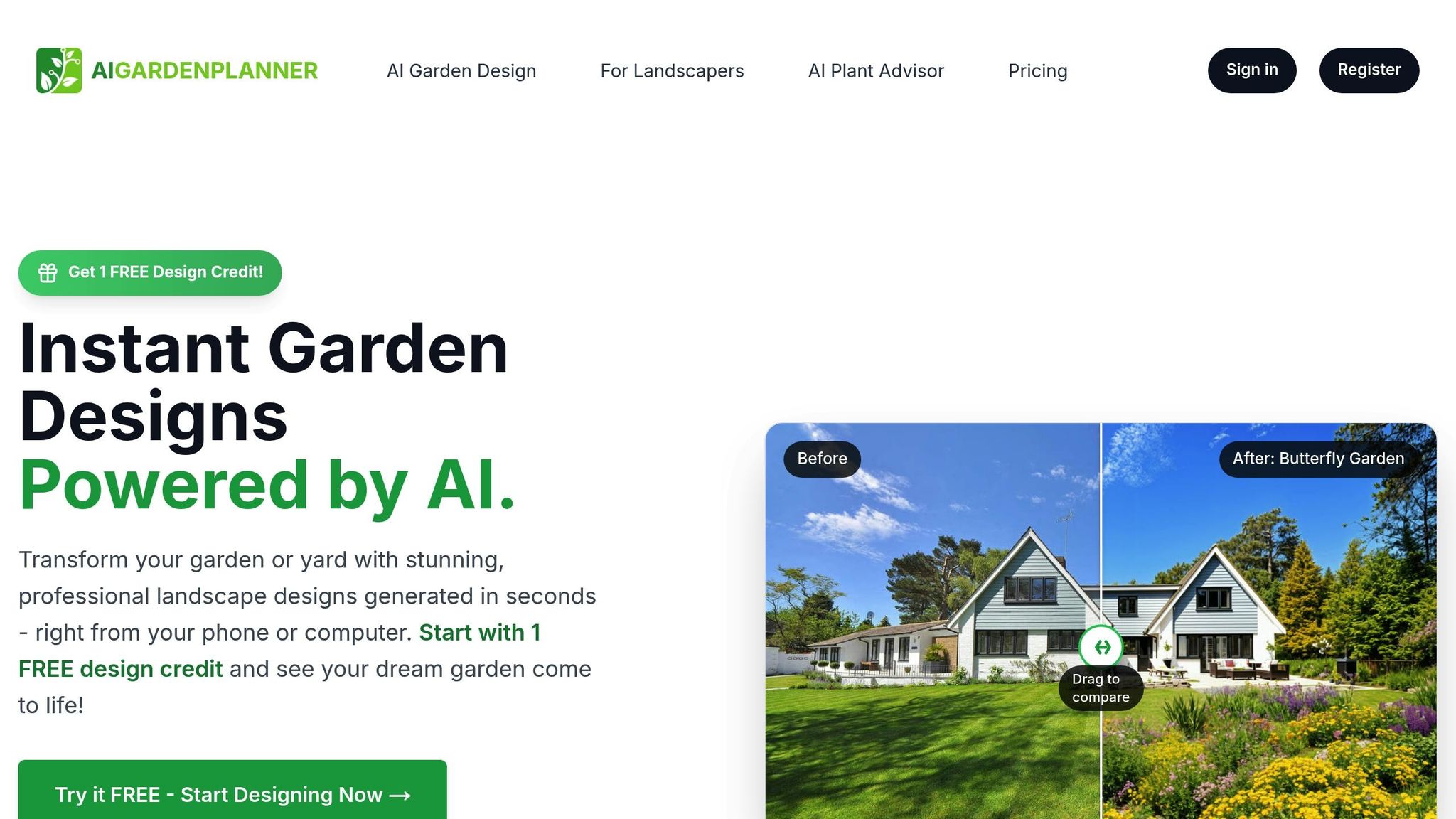
AIGardenPlanner takes soil data to a whole new level, turning it into actionable insights for creating thriving gardens. By combining AI-driven soil analysis with an extensive plant database, the platform crafts garden designs that complement your soil's unique characteristics and encourage healthy, sustainable growth.
Matching Plants to Your Soil Type
The AI Plant Advisor dives deep into your soil's specifics - pH levels, drainage, and nutrient composition - to suggest plants that will flourish naturally in your garden. Instead of forcing plants to adapt to unsuitable conditions, it matches them to environments where they can truly thrive.
For example, if your soil is sandy and drains quickly, the platform might recommend drought-tolerant herbs like rosemary and thyme, which are well-suited to such conditions. On the other hand, if your soil is heavy with clay and retains moisture, plants like astilbe or hostas are ideal choices due to their ability to handle consistent dampness.
The system also considers nutrient needs and root structures when grouping plants. Deep-rooted plants like tomatoes are placed strategically away from shallow-rooted ones like lettuce to avoid competition for resources. With over 50 garden styles to choose from, each design balances visual appeal with the health and compatibility of your plants.
This thoughtful approach ensures that your garden's foundation - its soil - is always working in harmony with the plants you grow.
Custom Plant Advice for Your Location
AIGardenPlanner doesn’t stop at soil analysis. It also factors in local climate, seasonal data, and weather patterns to offer precise plant and timing recommendations tailored to your region. By cross-referencing your soil's profile with regional growing conditions, the platform ensures that your garden is synced with nature’s rhythms.
For instance, in areas prone to heavy spring rains, it may advise holding off on applying nitrogen-rich fertilizers until the soil has drained properly. In hotter regions with intense summer heat, the system suggests planting schedules and plant varieties that can handle the soil's water retention capacity.
This location-specific guidance ensures that every recommendation - from plant selection to planting time - works seamlessly with your garden's natural environment, giving you the best chance for success.
The Future of AI in Soil Management
AI is reshaping soil management for home gardeners, turning what used to be a complicated and often expensive process into something simple and accessible. Traditionally, testing soil health meant mailing samples to a lab and waiting weeks for results. Now, AI-powered tools can analyze soil conditions quickly, often using just a smartphone photo and some basic data.
These systems are becoming impressively accurate at identifying nutrient deficiencies, such as imbalances in nitrogen, phosphorus, and potassium. In many cases, their results are comparable to those of traditional lab tests. Plus, unlike a one-time test, AI tools allow for continuous monitoring throughout the growing season, providing ongoing insights into soil health.
Take AIGardenPlanner, for example. This tool combines soil analysis with local climate information and an extensive plant database to offer gardeners tailored advice. Instead of generic tips, users get specific recommendations about which plants will thrive in their soil and environment. This personalized guidance is paving the way for even more advanced garden management tools.
AI isn’t just diagnosing soil issues anymore - it’s starting to predict them. By analyzing plant growth patterns, weather conditions, and soil history, AI can forecast potential nutrient deficiencies before they become a problem. This proactive approach helps gardeners take preventive measures, ensuring healthier plants and better yields.
Looking ahead, new sensor and automation technologies are set to take soil management to the next level. Imagine AI integrated with smart irrigation systems and automated fertilizer setups, creating a garden that adjusts itself in real time to changing conditions. Emerging sensors could provide constant, automated updates on soil health, eliminating the need for manual checks.
For home gardeners in the U.S., these advancements mean less trial and error, fewer crop failures, and more abundant harvests. AI is making professional-grade soil analysis a reality for everyone.
FAQs
How accurate is AI compared to traditional lab tests for detecting soil nutrient deficiencies?
AI-driven systems for identifying soil nutrient deficiencies boast impressive accuracy, with studies reporting rates ranging from 81.25% to 96.84%. These systems excel at processing vast amounts of data swiftly, providing real-time insights that save both time and money.
Although traditional lab tests may offer slightly higher precision in certain scenarios, AI stands out as a practical option. It delivers fast, detailed results that often rival lab-based methods. This makes it a valuable resource for gardeners and farmers looking for quick, actionable insights without the hassle or cost of laboratory testing.
What data does AI need to accurately detect soil nutrient deficiencies, and how can I collect it properly?
To pinpoint nutrient deficiencies in soil, AI depends on a mix of critical data points. These include soil sample results, historical soil records, climate trends, cropping history, and sensor readings like soil moisture, temperature, and electrical conductivity. Remote sensing tools, such as satellite imagery, also add valuable insights to the process.
For accurate results, it’s essential to follow proper soil sampling techniques, work with trustworthy lab testing services, and ensure sensors are well-calibrated. By combining high-quality data with regular monitoring, AI systems can deliver dependable insights into soil nutrient deficiencies.
Can AI tools like AIGardenPlanner predict soil nutrient deficiencies and help prevent them?
Yes, AI tools are capable of identifying soil nutrient deficiencies and offering preventive solutions. By leveraging machine learning and advanced data analysis, these tools can uncover patterns in soil health, spot early signs of nutrient imbalances, and predict potential problems. This helps users take timely actions to preserve soil fertility and avoid expensive setbacks.
For instance, AI can evaluate factors like soil composition, weather trends, and crop history to deliver precise recommendations. These might include modifying fertilizer application or adopting crop rotation strategies. Such insights are especially useful for gardeners and farmers aiming to improve soil health and support long-term, productive growth.
🎨 Visualize Your Dream Garden Today!
Transform any outdoor space into a professional landscape design in minutes. Just upload a photo, choose your style, and let our AI do the rest.
Start your garden transformation now →Related posts
Related Articles
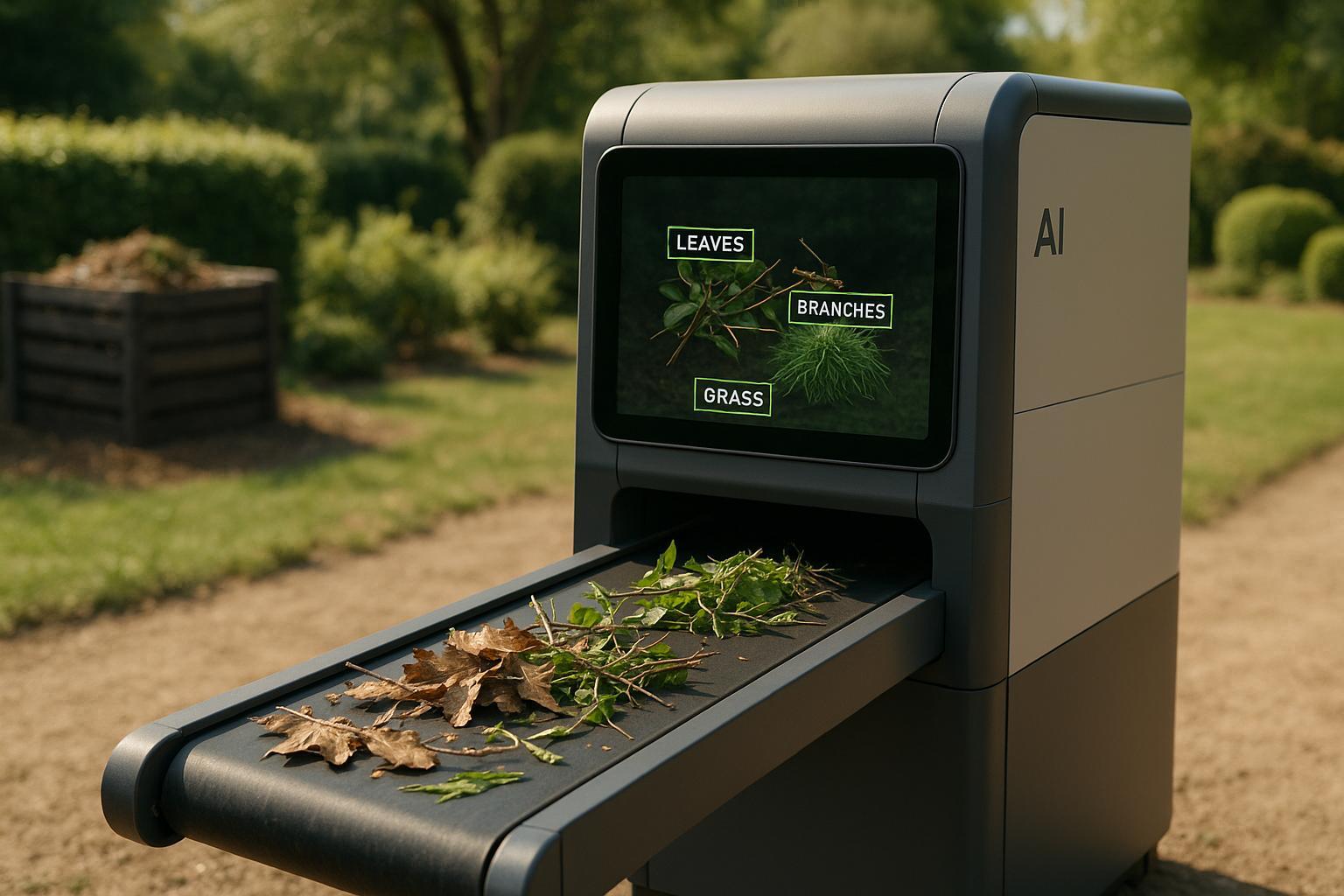
How AI Tracks Garden Waste in Real Time
Explore how AI revolutionizes garden waste management through real-time tracking, smart sorting, and enhanced composting techniques.

Digital vs Traditional Garden Design: Pros and Cons
Explore the advantages and challenges of digital and manual garden design methods to find the best approach for your project.

Checklist for Maintaining Garden Lighting Systems
Learn essential tips for maintaining your garden lighting system, ensuring safety and aesthetics throughout the seasons.

Ultimate Guide to Meditation Garden Boundaries
Explore how to create serene meditation garden boundaries with living and built elements for privacy, tranquility, and natural beauty.
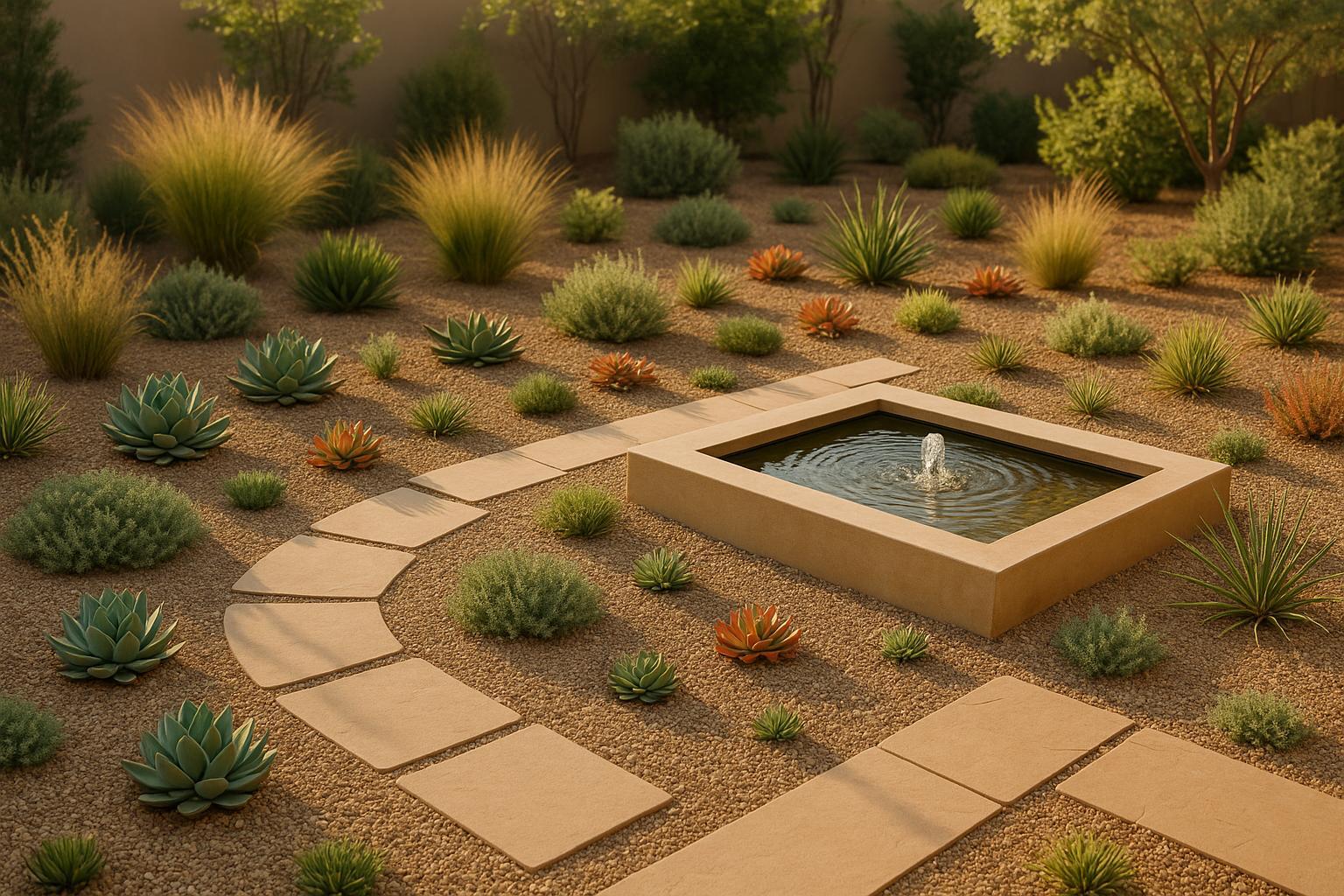
5 AI Tools for Energy-Efficient Garden Design
Explore innovative AI tools that simplify energy-efficient garden design, focusing on water conservation and climate adaptation for sustainable landscapes.
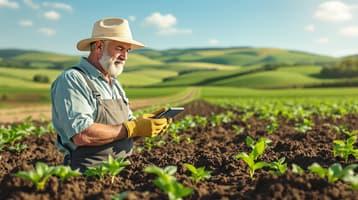
AI Tools for Soil Health Monitoring
AI tools revolutionize soil health monitoring, offering real-time data and insights to enhance gardening and farming practices.